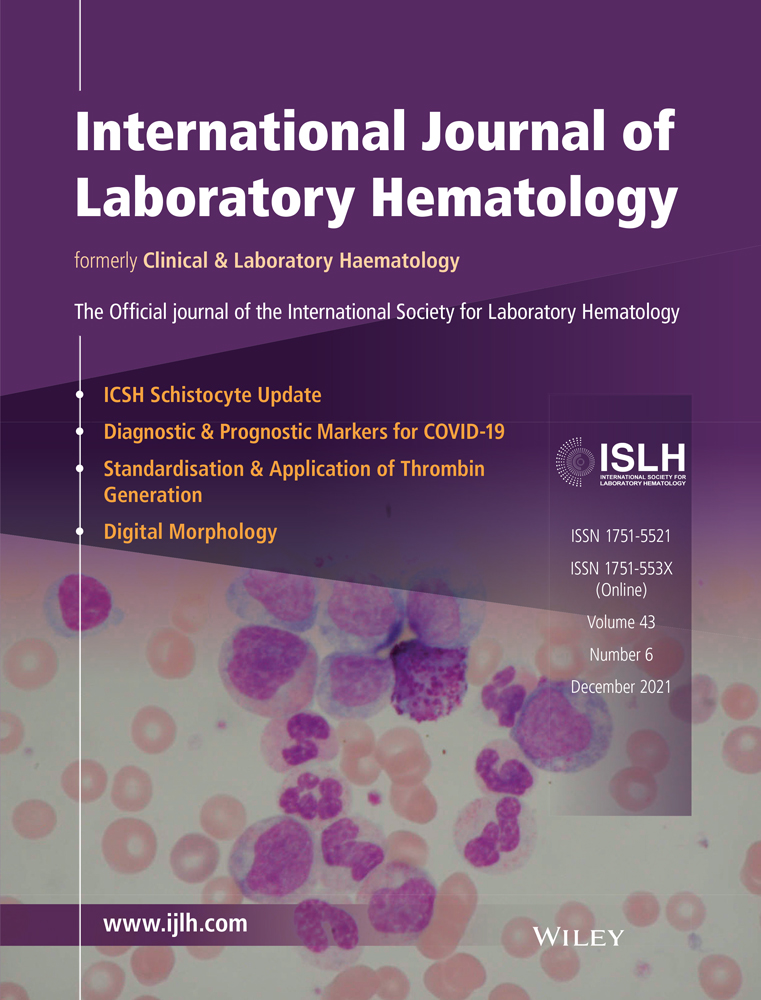Molecular and phenotype characterization of an elongated β-globin variant produced by HBB:C.313delA
Abstract
Introduction
β-thalassemia is a severe hereditary hemolytic anemia. Due to the diversity of mutations spectrum, β-thalassemia manifests a highly heterogeneous clinical severity. We noted that a previous report characterized HBB:c.313delA, at the end of exon 2, as a β-thalassemia trait rather than dominant β-thalassemia, the classification given to similar mutations. We further explored the impact of this functional variant on globin structure through larger pedigree analysis and in vitro studies.
Methods
Hematological analysis and molecular genotyping were conducted on the proband and his family members. We evaluated functional effects of the variant on β-globin gene in the proband's nucleated erythrocytes and transfected HEK-293T cells. Three-dimensional construction of protein structure was carried out in silico to demonstrate amino acid changes.
Results
The thalassemia major proband was identified as a compound heterozygote of HBB:c.313delA and HBB:c.126_129delCTTT. Three family members with heterozygotes of HBB:c.313delA displayed microcytic hypochromic anemia. Molecular characterization demonstrated that the frameshift mutation could give rise to retro-positioning of the termination codon, resulting in an elongated β-globin chain with an extension of 10 amino acids. Clinical phenotype and functional experiments indicated that HBB:c.313delA led to β0-thalassemia phenotype.
Conclusion
We concluded that the phenotype of HBB:c.313delA was mainly related to the stability of mutant mRNA, the degradation of mutant proteins, and production of inclusion bodies according to a systematic description of clinical phenotype and a series of molecular experiments.
CONFLICT OF INTEREST
Authors report no conflicts of interest.
Open Research
DATA AVAILABILITY STATEMENT
The data that support the findings of this study are available on request from the corresponding author. The data are not publicly available due to privacy or ethical restrictions.




